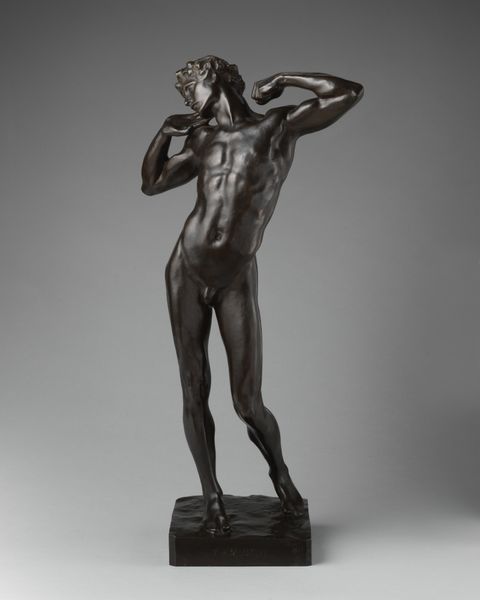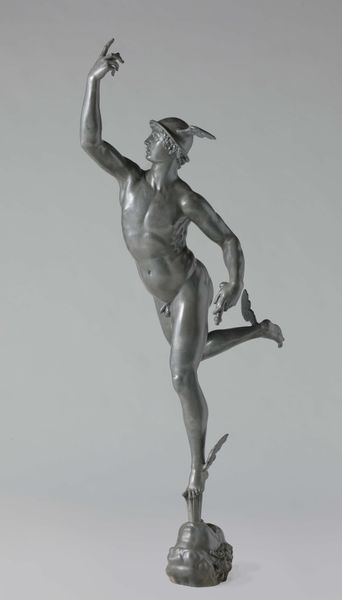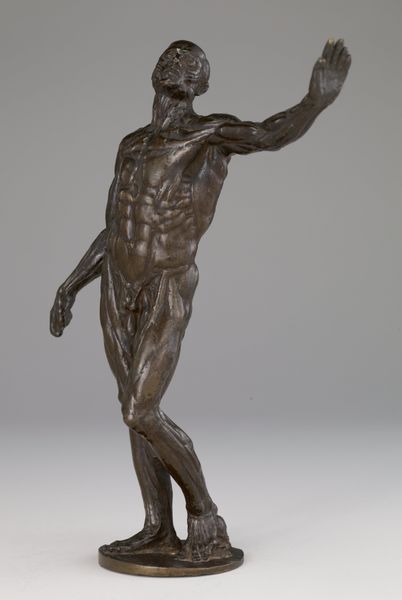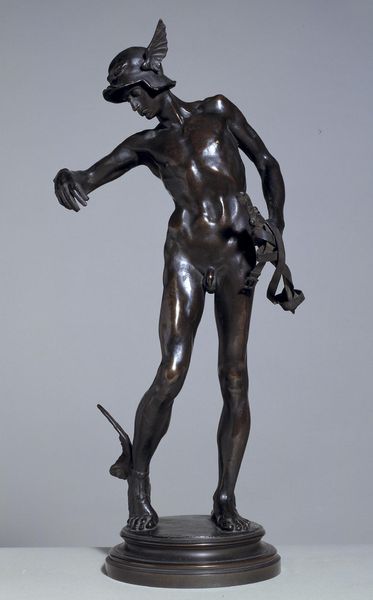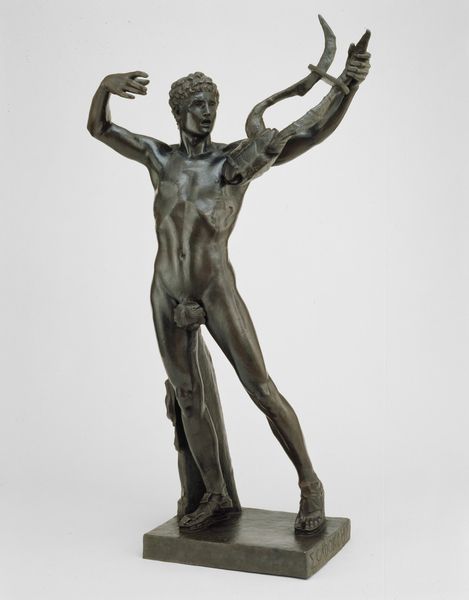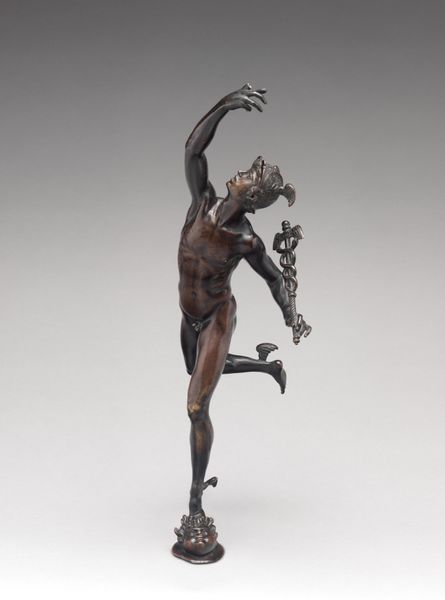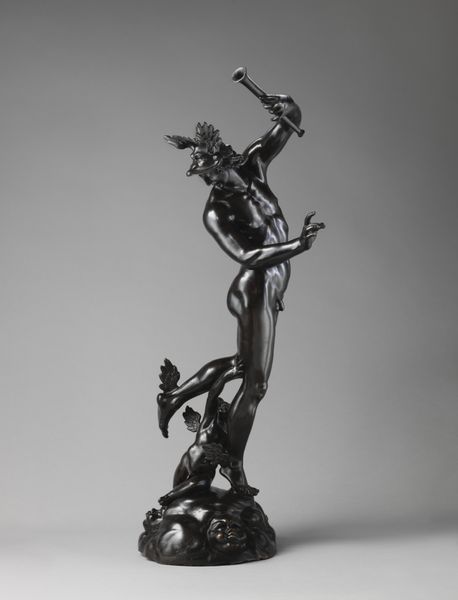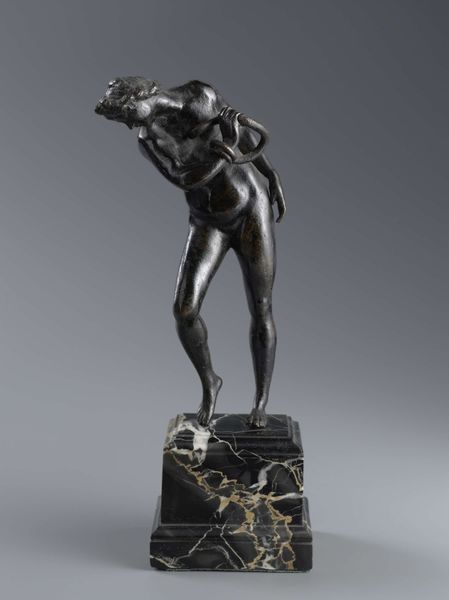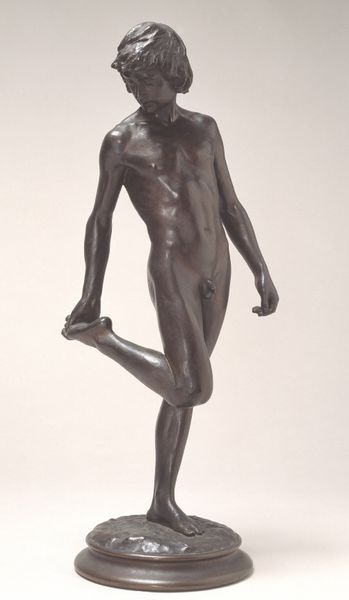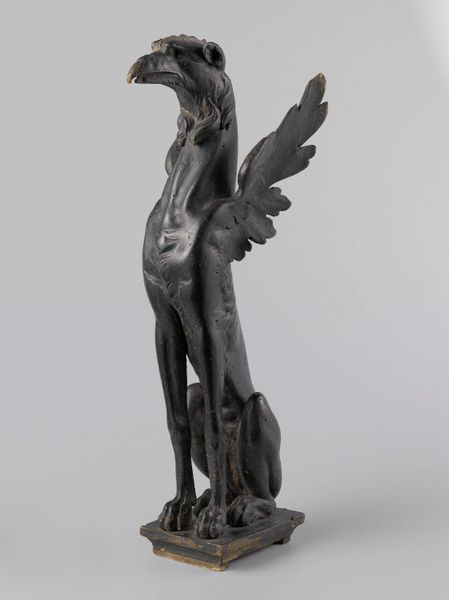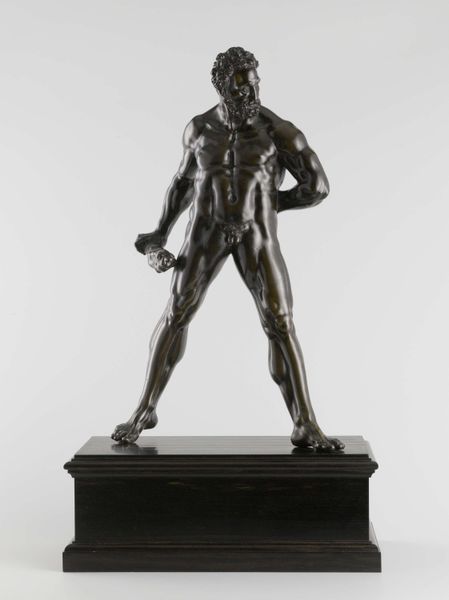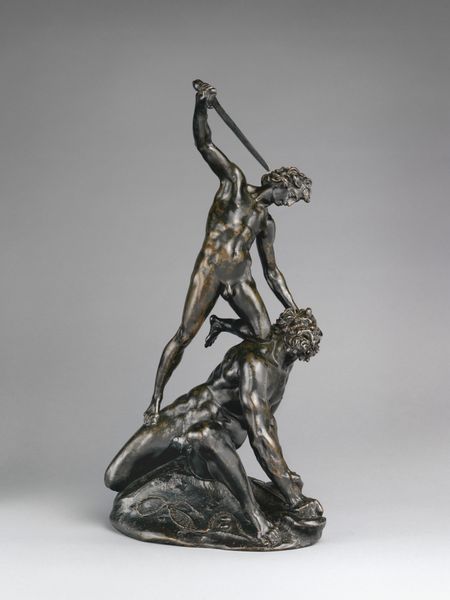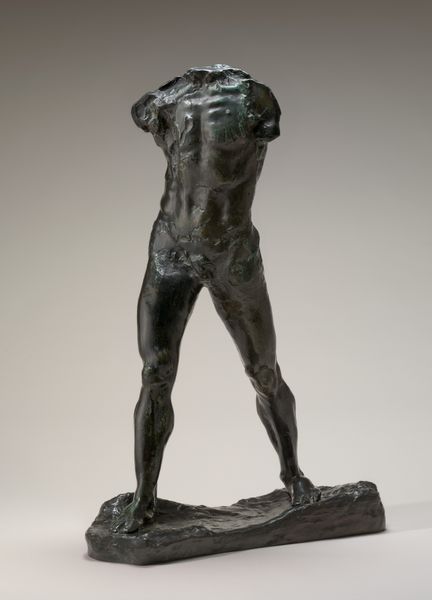
bronze, sculpture
#
sculpture
#
bronze
#
mannerism
#
sculpture
#
nude
Dimensions: height 108 cm, width 47.5 cm, depth 58.5 cm
Copyright: Rijks Museum: Open Domain
Curator: We're looking at Adriaen de Vries' bronze sculpture, "Bacchant," created around 1626. It resides here at the Rijksmuseum. What springs to mind for you when you see it? Editor: Immediate impression? Energetic and unbalanced. The figure is caught in a whirling pose, off-kilter but full of restless motion. I'm curious about the bronze itself; there seems to be a dynamic interaction between the subject and its materiality. Curator: Absolutely. Bacchants were, of course, the followers of Bacchus, the Roman god of wine and ecstatic revelry. De Vries captures that frenzied state beautifully. The raised arms, the thrown-back head, and the wild garland of grapes tell us a story of ritualistic ecstasy and being caught in a state of abandon. Editor: And bronze as a medium—a manufactured material, capable of remarkable detail through lost-wax casting—mirrors this push-and-pull between the wild and controlled. De Vries was obviously a master craftsman to capture that motion and tension. The very smoothness of the bronze highlights the textures he chooses to represent—the grapes, the hair. How long would that take? What kind of labor? Curator: De Vries clearly leaned into mannerism. Note the almost serpentine twisting of the torso, the exaggeration of movement. It's about emotional expression taken to its artistic limit. It pulls us back to Classical Greek statuary, but through a Northern European, almost Gothic filter, focusing on drama rather than pure idealized form. The sculpture shows how symbols such as Bacchus can reflect deep archetypes around intoxication. It embodies the power and loss of control. Editor: I see that clearly, though I would also note that such objects were made for the powerful elite. There is the labor to extract the raw materials, smelt the metals and finally there's the artistic labor. Luxury and display were always implicated in these celebrations, creating these sorts of symbols for wealthy patrons who want to demonstrate not a true Dionysian spirit, but power. Curator: A worthwhile observation to tie together economic and symbolic value. Thanks for the commentary! Editor: And thank you, your reading illuminated the deeper, classical resonances I might have missed!
Comments
rijksmuseum about 2 years ago
⋮
In so far as is known, this is the last sculpture Adriaen de Vries made. It radiates the virtuoso and idiosyncratic style for which he is so justly famous. The pose of the figure is very dynamic and the body is loosely modelled, lending the bronze a certain sketchiness and spontaneity. In this De Vries was far ahead of his time; sculptors would only adopt this exceptional manner of modelling a few centuries later.
Join the conversation
Join millions of artists and users on Artera today and experience the ultimate creative platform.
